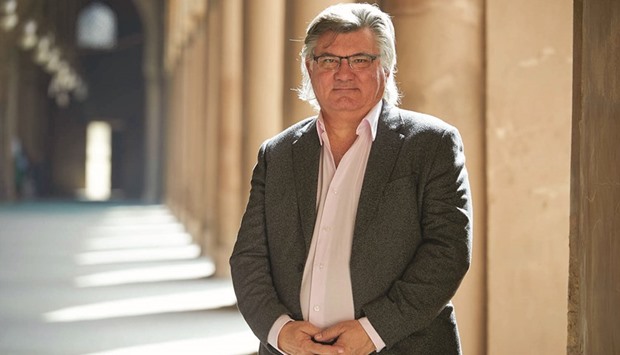The fascinating history of Ahmad Ibn Tulun (835-84), who became the founder of the first independent state of Egypt in the modern era and builder of Egypt’s short-lived third capital of the Islamic era, Al-Qata’i’, is the subject of what promises to be an insightful lecture by Dr Tarek Swelim, Associate Professor, Qatar Faculty of Islamic Studies (QFIS), this week.
In the lecture titled Ibn Tulun and His Great Legacy, which will be held at the Museum of Islamic Art (MIA) auditorium on October 19, from 6pm to 7pm, Dr Swelim will also discuss the legacy of the great mosque Ibn Tulun built, its design, and how its architectural influence was spread throughout Europe, Egypt, the Middle East, and even here in Doha’s MIA.
Dr Swelim told Community, “The subject of this lecture is in the wake of my new book, Ibn Tulun, His Lost City and Great Mosque, which was published last year. Originally, this was the topic of my PhD that I did at Harvard’s in 1994. I have been dealing with this subject in general since the early 1990s. So it’s been quite a few years since I have been exploring it. I have published a few articles from my PhD, delivered lectures, and also finished the book on this subject last year. So it’s still living with me till now. The mosque Ibn Tulun built is very simple in architecture. It’s also one of the oldest mosques in the world. It doesn’t have colours, ceramics, or paintings, but it boasts of a very high quality of architecture. That is something I will demonstrate in my lecture.”
The lecture will not only discuss the history of Ahmad Ibn Tulun and the iconic mosque, but will also throw light on the topography of Al-Qata‘i’ until its complete destruction in 905AD. The architectural history of the mosque of Ibn Tulun will be discussed, as it is currently the oldest surviving mosque in Egypt. Lastly, the lecture will examine the legacy of Ibn Tulun’s architecture in Egypt, Europe, Qatar and elsewhere.
Dr Swelim explained that this period marked the beginning of establishment of Islamic architecture in the world. “Ibn Tulun built a city that was wonderful but it was destroyed a few years after he passed away. I have envisioned how the city looked and have made drawings of how it should have looked, according to the historical documents describing it. Moreover, I have made 3D graphics of how it would have looked through different stages of history. I believe this is an approach to the subject that hasn’t been adopted before,” Dr Swelim said. “The lecture, therefore, will be a mélange of interesting chunks of history and explorations of great architecture via slides, graphics, 3D work, illustrations, paintings, engravings from the 19th century, and photographs from the 19th and 20th century.”
The oldest mosque in Egypt, Ibn Tulun Mosque was completed in 879AD on Mount Yashkur in a settlement named Al-Qata’i by the founder of Egypt’s Tulunid Dynasty (868-905AD), Ahmad Ibn Tulun. According to the website TourEgypt, Al-Qata’i was about two kilometres from the old community of Fustat. “He was born in Baghdad, the son of a Turkish slave of Mongol origin owned by the Caliph, al-Ma’mun. He would later rise to become governor of Egypt after his stepfather, who died in 870, was awarded that position,” the website says. “The mosque that he had built over a period of three years of mudbrick became the focal point of the Tulunid capital that lasted only 26 years. It was the third congregational mosque to be built in what is now greater Cairo, and at approximately 26,318 square meters in size, is the third largest mosque in the world.”

Dr Tarek Swelim
